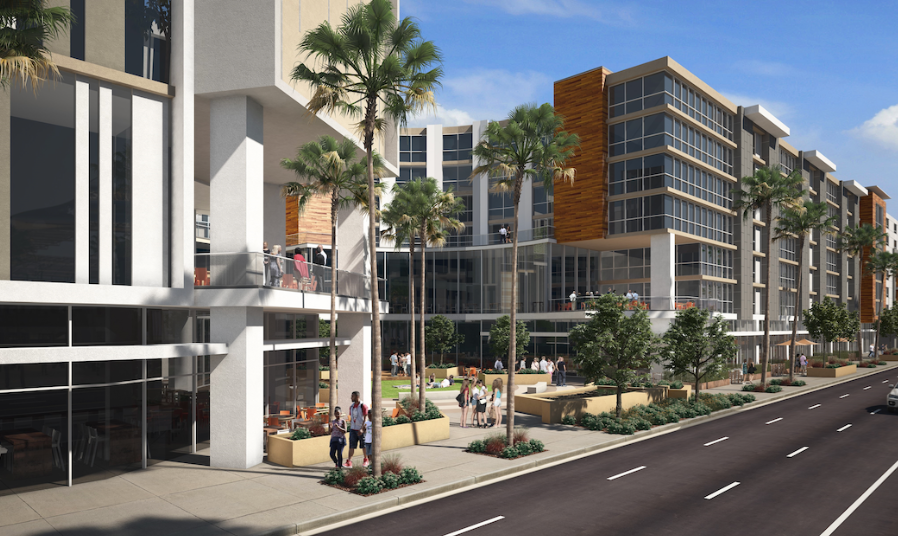Table of Contents
- Introduction to Mixed-Use Developments
- Enhancing Community Vibrancy
- Convenience and Accessibility
- Environmental Sustainability
- Economic Benefits
- Social Cohesion and Diversity
Introduction to Mixed-Use Developments
Mixed-use developments are becoming increasingly popular in urban planning due to their ability to integrate residential, commercial, and recreational spaces. These developments create vibrant, sustainable communities where people can live, work, and play. For instance, individuals seeking spacious office rentals in Ottawa often find mixed-use developments appealing. Unlike traditional single-use zoning, mixed-use developments bring varied amenities and services closer to residents, enhancing urban living experiences.
The concept revolves around creating inclusive spaces that support diverse activities, reducing the need for long commutes and fostering a strong sense of community. This compact living model is becoming essential in today’s rapidly urbanizing world. As cities grow denser and space becomes premium, mixed-use developments offer a viable solution for accommodating a wide range of activities within a confined area, promoting efficient land use.
Enhancing Community Vibrancy
One of the main benefits of mixed-use developments is the vibrancy they bring to communities. These areas become bustling hubs of activity throughout the day by combining different types of spaces, such as retail shops, offices, and apartments. This continuous flow of people can lead to stronger community bonds and a more dynamic urban environment. Regular interactions among residents, business owners, and visitors can foster a sense of belonging and community.
The variety of amenities and services within mixed-use developments means that there is always something happening, be it a local market, cultural event, or community gathering. This constant activity keeps the area lively and supports local businesses, as residents are likely to shop and dine locally. Green spaces, parks, and recreational facilities add to the vibrancy, offering residents and visitors alike places to relax, exercise, and socialize.
Convenience and Accessibility
Mixed-use developments offer unparalleled convenience and accessibility. Residents no longer need to travel long distances for work, shopping, or leisure, as these amenities are integrated into their neighborhoods. This reduction in travel can lead to a more relaxed, enjoyable lifestyle and reduces reliance on cars, promoting a more walkable and bike-friendly urban area.
Additionally, integrating public transportation options within mixed-use developments further enhances accessibility. Residents have easy access to bus routes, train stations, and bike-sharing programs, which encourages the use of public transit and reduces the carbon footprint. The proximity to essential services such as healthcare facilities, schools, and supermarkets adds convenience, making daily errands and tasks more manageable and less time-consuming.
Environmental Sustainability
Mixed-use developments contribute significantly to environmental sustainability by promoting walkability and reducing car dependency. These projects often include green spaces, energy-efficient buildings, and sustainable design principles. Green rooftops, rainwater harvesting systems, and renewable energy sources are commonly incorporated to minimize the environmental footprint.
Mixed-use developments also support sustainable urban growth by utilizing existing infrastructure and reducing the need for urban sprawl. These projects help preserve natural landscapes and reduce habitat disruption by concentrating development in already urbanized areas. Sustainable building materials and construction practices are often employed, reducing environmental impact. Moreover, the emphasis on green transportation options, such as electric vehicle charging stations and extensive pedestrian pathways, underscores the commitment to sustainability.
Economic Benefits
Economically, mixed-use developments can be a boon to local economies. They attract businesses and retailers, create jobs, and increase property values. The diverse range of services and activities generates a continuous economic flow, making these areas economically resilient and attractive to investors. The synergy between businesses and residents creates a thriving economic ecosystem where everyone benefits.
Small businesses, particularly, stand to gain from the high foot traffic and visibility of mixed-use developments. This bustling environment is conducive to entrepreneurship and innovation as new ventures find a ready market among residents and visitors. Property developers and investors also find mixed-use projects appealing due to their potential for higher returns and lower vacancy rates. As these developments mature, they become sought-after destinations, further boosting the local economy.
Social Cohesion and Diversity
These developments also foster social cohesion and promote diversity. Mixed-use projects bring together people from different walks of life by offering affordable housing options alongside luxury residences and diverse commercial spaces. This diversity can lead to a more inclusive, cohesive community with frequent social interactions and cultural exchanges. Residents can experience a sense of belonging and mutual respect, enriching the community’s social fabric.
In addition, the design of mixed-use developments often includes communal spaces such as parks, plazas, and community centers, which serve as venues for social activities and gatherings. These spaces provide opportunities for residents to engage in various cultural, educational, and recreational activities, fostering a stronger sense of community. The variety of housing options ensures that people of different income levels and backgrounds coexist, promoting an inclusive environment that values diversity.

